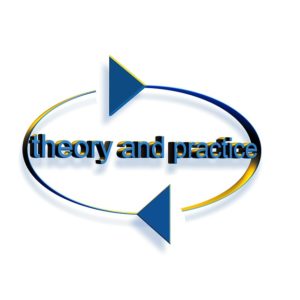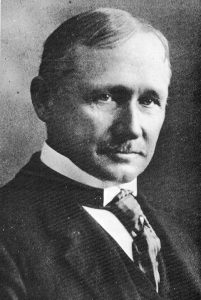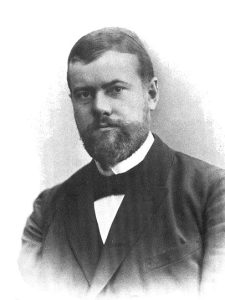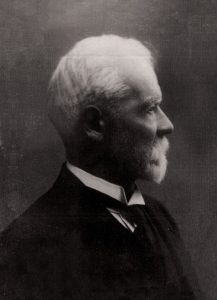2

CCO Public Domain
What is theory? The word “theory” originally derives its name from the Greek word theoria, θεωρία, which roughly translated means contemplation or speculation. Modern understandings of the word “theory” are slightly different from the ancient Greeks, but the basic idea of contemplating an idea or speculating about why something happens is still very much in-line with the modern definition. A theory is a “group of related propositions designed to explain why events take place in a certain way. Let’s break this definition down into its basic parts. First, a theory is a “group of related propositions,” which is a series of statements designed to be tested and discussed. Ultimately, these statements propose an explanation for why events take place and why they occur in specific fashions. For example, Sir Isaac Newton (of the claimed apple falling on his head) created the modern theory of gravity to explain why the different planets and stars didn’t go crashing into each other (very simplistic summation of his theory). While Newton’s theory of gravity was pretty good, it couldn’t account for everything so ultimately Albert Einstein’s theory of relativity came on the stage to further our understanding of how gravity actually works. In both cases, we have two well-respected researchers attempt to understand a basic phenomenon of our physical world, gravity. Just like physicists have been trying to understand why the planets rotate and don’t crash into each other, organizational scholars have attempted to create theories for how and why organizations structure themselves the way they do; why people behave the way they do in organizations; why leaders and followers interactions lead to specific outcomes, etc…
The way we talk about a problem directly influences the solutions we can articulate to address the problem. Theories of organization and communication should enhance our ability to articulate alternative ways of approaching and acting on practical issues.” They further noted that theories have two basic qualities: metaphorical and historical. When theories are metaphorical, it means that theories provide a linguistic means of comparing and describing organizational communication and function. As you know from English, a metaphor is a figure of speech where a word or phrase is applied to an object or action, but the word does not literally apply to the object or action. In this overview, theories comparing organizational phenomena to machines and biological organisms will be examined. Theories that are historical show theories in terms of the period in which they were created and were popular. Theories are also historical because they are often a product of what was important and prevalent during that time.
The Classical Perspective
To understand classical theories, a brief history of industrialization is really necessary. Industrialization, or the industrial revolution, refers to the “development and adoption of new and improved production methods that changed American and much of Europe from agrarian to industrial economies. So, how did both Europe and American transform themselves from agrarian, or farming, based economies to industrial ones? To pinpoint a single event or invention that really created the industrial revolution is almost impossible. From approximately 1750 to 1850 a variety of innovations in agriculture, manufacturing (both iron and textiles), mining, technology, and transportation altered cultural, economic, political, and social realities. For the first time in history people stopped working on family farms or in small family owned businesses and started working for larger organizations that eventually morphed into the modern corporation. While there had been models of large organizations with massive influence, like the Catholic Church, these organizations had been very limited in number. As more and more people left the family farm or local weaver in hopes of bettering their lives and the lives of their families through employment in larger organizations, new tools and models for managing these workers had to be developed.
Perhaps, the most widely known theories of organizational communication are those during the classical period that stemmed out of the industrial revolution. The main idea of the classical perspectives of organizational communication is that organizations are similar to machines. Hence, if you have a well- built and well-managed machine, then you will have a very productive and effective organization. The assumption is that each employee is part of a large machine, which is the organization. It one part fails then the entire machine fails.
Fredrick Taylor’s Scientific Management

Wikimedia Commons
In 1913, Frederick Taylor published Principles of Scientific Management ushering in a completely new way of understanding the modern organization. Frederick Taylor was trained as an engineer and played a prominent role in the idea of scientific management. Scientific management is a management oriented and production-centered perspective of organizational communication. Taylor believed that the reason why most organizations failed was due to the fact that they lacked successful systematic management. He wrote that “the best management is true science resting upon clearly defined laws, rules, and principles, as a foundation. He further noted that “under scientific management arbitrary power, arbitrary dictation ceases, and every single subject, large and small, becomes question for scientific investigation, for reduction to law Taylor believed that any job could be performed better if it was done scientifically and created time and motion studies that resulted in organizational efficiency.
Working as a foreman at on for the Bethlehem Steel Works in the 1900s, Taylor observed how workers could do more with less time. He analyzed coal shoveling at the organization. He noticed several workers would bring different size shovels from home. Workers who brought small shovels could do more but it took them longer and workers who brought big shovels could do less but it was faster. He observed that the best size shovel was one that weighed about twenty pounds. Hence, he ordered the organization to provide all the workers with the same size shovel. He also provided pay incentives for workers who could shovel more coal. By making these changes, the organization was able to increase production drastically.
Bethlehem Steel Plant, 1896

Wikimedia Commons
In order to have a more productive organization, Taylor believed that there were several steps involved. First, one must examine the job or task. Second, one needs to determine the best way to complete the job or task. Third, one must choose the most appropriate person for the task at the same time properly compensating that person. Lastly, one must be able to train the person to do the task efficiently. Taylor believed that by using these scientific steps, then organizations would have fewer misuses of human effort.
Taylor’s idea of scientific management originated during the time in history when most training of workers was based on apprenticeship models. In an apprenticeship, a person would be taught and skilled by a more experienced person, who would illustrate the task so that the inexperienced person could model the behavior. Taylor believed that this was a very ineffective way of training because he felt that workers would differ in terms of tasks that were performed and the effectiveness of the tasks would be dependent on the type of training received. Taylor argued that the there should be only one way to explain the job and one way to execute the task. He did not believe that it should be left up to the expert to train apprentices on the task.
Overall, Taylor felt that employees were lazy and needed constant supervision. He posited that “the tendency of the average [employee] is toward working at a slow easy gait.” In other words, he noted that this tendency is called natural soldiering, which is affected by systematic soldiering, which occurs when employees decrease their work production based on input or communications from others. According to Taylor, systematic soldiering happens when employees feel that more production will not result in more compensation. In addition, if employees are paid by the hour and wanted to increase their income, then they might demonstrate that it takes more time in order to get compensated more than they would if they exerted more effort. Because Taylor believed that employees were inherently lazy, he felt that employees also impact the rate of production.
Taylor is known for his idea of time and motion. In other words, time and motion referred to a method for calculating production efficiency by recording outcomes and time to produce those outcomes. Taylor believed that if each task was designed scientifically and the workers could be trained, then production could be measured by timing the labor the workers performed. It was his intention to create a work benchmark that could be quantified to improve efficiency and production outcomes. Taylor’s ideas on time and motion were ultimately furthered by the research of Frank Gilbreth who furthered the notion of time and motion by filming workers in action in an effort to gain a better idea of physical movements.
Taylor felt that if organizations were run like machines, then it would be ideal, because all tasks were clear-cut and simple. At the same time, these tasks typically did not allow for flexibility, creativity, or originality. In addition, there is a clear cut distinction between managers who think and workers who labor. Thus, this perspective does not account for work motivations, relationships, and turbulence in organizations.
Another key factor about Taylor’s scientific method is the style of communication. Taylor did not feel the need to build rapport among workers. Rather, he felt that managers needed to communicate in a clear-cut and candid manner. Further, employees do not need to provide input, they just need to know how to execute their jobs.
While Taylor’s ideas quickly took off like wild fire, they were not without their detractors. As early as 1912, the U.S. Commission on Industrial Relations was raising skepticism about scientific management or what many were just calling Taylorism:
To sum up, scientific management in practice generally tends to weaken the competitive power of the individual worker and thwarts the formation of shop groups and weakens group solidarity; moreover, generally scientific management is lacking in the arrangements and machinery necessary for the actual voicing of the workers ideas and complaints and for the democratic consideration and adjustment of grievances.
Bureaucratic Theory
Max Weber and Henri Fayol were also two theorists known for their work in the classical perspectives to organizational communication. These two theories focus on the structure of the organization rather than the organizational activities. Many of their ideas are still used today.
Max Weber

Wikimedia Commons
Max Weber termed bureaucracy as the ideals in which organizations should aim for and aspire. Weber was influenced by socialist philosophy. He developed the idea of bureaucracy when he noticed several corrupt and unethical behaviors of leaders. He felt that organizational leaderships should center on task proficiency and impersonal relationships. Even though many people associate bureaucracy with red tape and ineffective organizations, this is not the outcome of bureaucracy. According to Weber, bureaucracy should be synonymous with order, consistency, reason, and reliability. In order to aspire to these traits, organizations need to have specific rules and emphasize impersonality. He noted that bureaucratic organization much have the following characteristics:
Specialization & Division of Labor
Specific set tasks allow employees to achieve its own objective. Thus, every worker did not have to do many jobs, but an exclusive task that was assigned to that worker. This helped to alleviate multiple trainings and increase production.
Rules & Procedures
Written policies help manage and direct the organization. Managers spend a majority of their time on how these policies help to guide and function in the organization. These procedures would serve as a guide and resource for the organization.
Hierarchy of Authority
Organizations need to have a chain of command that is shaped like a pyramid. There are levels of supervisors and subordinates. Each worker will answer to their corresponding superior. This would assist in having a direct line of communication and better efficiency in the organization.
Formal Communication
All decisions, rules, regulations, and behaviors are recorded. This information and communication will be shared in terms of the chain of command. Hence, everything is documented and accounted. There is no question in what needs to be done, because it is written down.
Detailed Job Descriptions
The organization has clear and concise definitions, directions, and responsibilities of each position. Each worker is aware of their task and how to employ.
Employment Based on Expertise
The organization will assign workers in positions that would fit their competencies. Hence, workers will be placed in the organization were they can maximize production.
Impersonal Environment
Relationships need to be impersonal and separate so that workers’ personal thoughts or feelings would not affect bias or decisions. Workers just need to work and they do not need to interact with others. Interpersonal relationships may jeopardize the organization’s outcomes.
Weber (1947) categorized three types of authority: traditional, bureaucratic, and charismatic. Traditional authority is related to the backgrounds and traditions of an environment. This leadership is usually passed down from one family member to another without little regard to who is more apt or capable. Thus, authority is given to another based on custom or tradition. Think of family owned businesses and how those businesses usually do not let outsiders infer with it unless they are related to the family.
Charismatic authority is founded on the idea that the best candidate for this position will be the one who can exert authority. This person is usually charismatic, hence the name. If this person ever leaves the position, then their authority does as well. According to Weber, charismatic leaders are ones that lead to insecure and unpredictable organization because there is a vague idea of who will replace their position.
Another type of authority is bureaucratic. Weber felt that bureaucratic was the best way to delegate authority in an organization. Bureaucratic authority is founded on set objectives and criterion. Hence, the best leaders were bureaucratic leaders because they were picked in terms of the guidelines set out for that organization’s mission. Weber believed that bureaucratic authority was the ideal way to select authority because it neutralize thwarted ideas of nepotism, preferential treatment, prejudice, and discrimination. Hence, a candidate would be selected in terms of their job competency and not their linage or personality.
Weber’s Types of Authority
| Types of Authority | |||
| Traditional | Charismatic | Bureaucracy | |
| Based on | Family lineage | Personality | Rules & actions |
| Specialization | None | Charisma | Technically qualified |
| Hierarchy | Seniority | Preferences | Authority |
| Leadership Succession | Family | Popularity | Most appropriate for the position |
| Communication | Depends | Depends | Is written and has numerous records |
| Viewed as | Nepotism | Partisan | Systematic |
Henri Fayol

Wikimedia Commons
Fayol’s principles of management are similar to the military because there is unity in direction, unity in command, subordination of individual interests to the general interest, and order.
Henri Fayol managed a French mining company, called Comambault, which he was able to transform from almost a bankrupt organization to a very successful one. Originally, he worked there as an engineer then moved into management, and later leadership. Similar to Weber, Fayol felt that their needed to be division of labor, hierarchy, and fair practices. Fayol believed that there were principles of management which included:
Unity of Direction
The organization should have the same objectives, one plan/goal, and one person of leadership/authority.
Unity of Command
Employees should get orders from only one person. Therefore, there would not be a chain in command. One person would be the person in charge and be responsible.
Authority
Managers have the entitlement to provide orders and obtain compliance. No other individuals in the organization have the privilege of power.
Order
The organization must have set places for workers and resources. These should be in the right place at the correct time.
Subordination of Individual Interest to the General Interests
The interest of the organization is most significant and not those of the group or individuals working for the organization.
Scalar Chain
There is a hierarchical order of authority. There is a sequence and succession to how communication is transferred from one person to the other. This is similar to horizontal communication where workers of the same level communicate with each other.
Even though Fayol’s principles may appear to be strict, he was one of the first theorists to grasp the idea that having unconditional compliance with an organization may lead to problems. Hence, he also noted that each organization must determine the most favorable levels of authority.
All in all, communication in the classical perspective has two functions: control and command. Fayol believes that organizations must limit their communication to precise and explicit words for task design and implementation. Thus, communication is not spontaneous and is more centralized in a classical organization.
Fayol also believed there were certain management activities. He felt there were five activities that are applied to the administration unit of an organization. These activities included: planning, organizing, commanding, coordinating, and controlling and controlling. As explained by Fayol, planning is where managers create plans for the organization and predict future organizational needs. Next, organizing occurs when organizations employ people and materials to complete their plans. Commanding is what managers do to get the optimal output in production and efficiency. Coordinating is where managers bring together the labors of all of its employees. Last, controlling is to determine the accuracy of the organization’s efforts and its plan. Fayol’s impact still has a big influence on many of today’s organizations’ climate, structure, and leadership.
Tompkins and Cheney’s Organizational Control Theory
Phillip K. Tompkins and George Cheney’s organizational control theory is an extension of Weberian theory applied to organizations that are moving past the bureaucratic mode but are yet to be totally amorphous. This theory holds that there are four kinds of control that determine how organizations exercise power within and they are simple, technical, bureaucratic, and concertive.
In a way, these four types of control are defined according to the progression of the organization from very simple organizational models to pure bureaucracies to overly technical and finally an organization where everyone knows what is expected of him or her and has the purpose of the organization’s mission and vision clearly etched within them. The point here is that Tompkins and Cheney posit a model where control and communication is more than what Weber had envisaged and less than what post modern theorists say about organizational control and communication.
Email for Phillip K. Tompkins: tompkinp@colorado.edu
Email for George Cheney: gcheney@uccs.edu
Deetz’s Managerialism Theory
The evolution of organizational structure and models over the years has spawned theories that reflect the changing organizational norms and Stanley Deetz’s Managerialism Theory is one such attempt to define how organizational communication and organizational control happens in the companies where classical notions are replaced with an acknowledgement of the political and economic interests as well as the need to represent and give voice to these diverse interests.
The highlight of this theory is that Deetz goes beyond fixed notions of organizations and instead, posits a view of organizations that take into account the democratic aspirations of the people and the power centers in the organization. This combination of recognizing the fact that meaning lies in people and not their words and to find out the interests behind these meanings is indeed a progression from the faceless and nameless bureaucratic model of Weber and the slightly improved control theory of Tompkins and Cheney.
The point here is that Deetz’s theory arose out of the need to recognize the preeminence of the managerial class as a force to reckon with in organizations in the latter part of the 20th century and hence represents the natural evolution of organizational theory of control and communication.
Stan Deetz on Criticial Theory of Communication in Organizations
Conclusion
The point to note about these theories is that they are representations of reality as seen by the proponents and also reflect the idealistic aspirations of these theorists. There is nothing to say that such structures alone exist or that they are not valid. Instead, a nuanced view of organizational theory that has emerged in recent years with the systems view of organizations is something that is contemporary and relevant to the agile and nimble organizations of the 21st century.
Indeed, these theorists discussed here were pioneers during their time and likewise the emerging crop of management experts now are taking the views of these theorists to the next level. In conclusion, all management theorists acknowledge the natural progression of organizational models and hence their contributions to the field of organizational control and communication are akin to each wave of theorists standing on the shoulders of giants who were there previously.
References
Cheney, G., Christensen, L.T., Zorn, T.E., and Ganesh, S. (2004). Organizational Communication in an Age of Globalization: Issues,
Reflections, Practices.” Long Grove, IL: Waveland Press.
Deetz, S., Tracy, S., and Simpson, J. (2000). Leading organizations through transitions: Communication and cultural change.
Thousand Oaks, CA: Sage. 230 pages, plus xi. Hrd & pbk.
May, Steve and Mumby, Dennis K. (2005). “Engaging Organizational Communication Theory and Research.” Thousand Oaks, CA:
Sage.
Taylor,F.W. (1911). The principles of scientific management. New York: Harper Brothers.
Van De Ven, Andrew H.; Ganco, Martin; Hinings, C.R. (Bob) (2013). “Returning to the Frontier of Contigency Theory of
Organizational and Institutional Designs”. The Academy of Management Annals. 7: 393–440.
